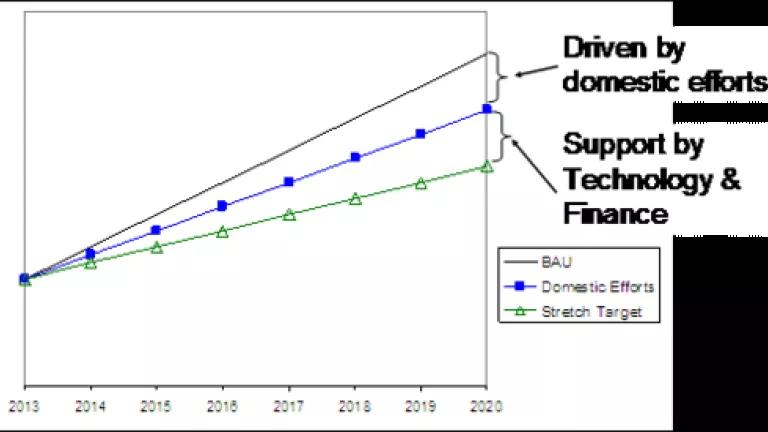
Well the formal statements of the US delegation at this meeting are being unhelpful as usual. So much for that "caretaker" role that they professed to take at this meeting. In particular, some of the statements that I've caught on what actions they -- "the Bush Administration" -- want from developing countries in the post-2012 international global warming agreement have been particularly unhelpful. Especially as President-elect Obama (and his Administration) will have to rebuild the many bridges that have been burned by the Bush Administration over the past 7 plus years as he works to restore America's global leadership on global warming.
But that isn't news. And since no one really is listening to them -- as they are in the final days of a painful seven years -- what emissions reduction actions can we expect the US to be asking developing countries do as a part of the Copenhagen agreement?
I won't try to "read his mind" (and I'm sure his thinking will evolve as he becomes President), but here is what President-elect Obama said he'll work to have developing countries do as a part of the global effort:
So, what form of actions could developing countries take to meet this framework? Well one form that I've commented on before and that NRDC will be discussing as a part of a soon to be released working paper is a Nationally Appropriate Sectoral Target.
Under this approach, each of the emerging economies would negotiate agreed-upon "stretch targets" on a sectoral basis for key sectors-such as electricity and energy-intensive industries. The initial effort -- the "domestic effort" -- would be financed with internal resources and the remaining reduction would be financed through international assistance (see Figure). Where needed, assistance also could be provided for improving a country's capacity to measure and regulate emissions in given sectors.
A stretch target could take the form of an absolute cap on sectoral emissions or could be formulated as a performance standard -- a rate of emissions per unit of production. Sectoral targets could differ somewhat from country to country to recognize legitimate differences in national circumstances.
Encouraging the greatest level of action from developing countries will likely require appropriately designed "performance-based" incentives. In the discussions of sectoral approaches, two incentives have been proposed --- carbon markets and technology.
- Countries that outperform their "stretch" target would be eligible to sell the extra emissions reductions on the carbon market for use by developed countries in meeting their targets.
- Technology incentives could be provided for "advanced technologies" that make a sector or facility's operations less competitive. This could be coupled with a loan program for activities that "pay for themselves" over time (e.g., energy efficiency). Developing countries would then be mobilizing their own domestic resources for these types of projects, but the developed world would be providing loans to help overcome upfront barriers to the deployment of those technologies.
Over time, a developing country would expand the number of sectors subject to these targets, as national capacity to monitor and regulate these sectors grew. In this way, countries would evolve toward economy-wide or national coverage as the percentage of national emissions covered by such targets grew. Likewise, overtime the performance standards would need to tighten and/or transition to absolute caps. In this way, countries would transition towards effective national limits with emissions trading.
"Offsets" such as the Clean Development Mechanism (CDM) can not succeed as the primary mechanism for developing country involvement in the global climate effort. A new mechanism is needed that builds upon the CDM -- one that improves the means for delivering global emissions reductions, improves the transfer and deployment of technologies in developing countries, makes greater strides in reducing the rate of growth of developing country emissions in the near-term, and lays the foundation for even deeper emissions cuts in the mid-term.
A Nationally Appropriate Sectoral Target offers one promising way to accomplish these aims. One that will be a key part of the debate as we lead-in to Copenhagen (December 2009).

